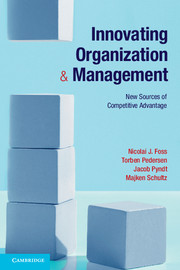Chapter 8 - NKT Flexibles
Global sourcing of R&D innovation
Published online by Cambridge University Press: 05 June 2012
Summary
Sitting in his office, the R&D Manager of NKT Flexibles, Niels Rishøj, took a break, turned his chair around, and looked out the window. As a flock of birds passed by in the sky, he considered the challenge he faced. In recent years, NKT Flexibles had been very successful in producing and selling complex, high-quality flexible pipe systems for a number of offshore oil and gas applications. Turnover had grown from approximately US$98 billion in 2005 to US$280 billion in 2008 (Table 8.1). This growth was largely a result of the company’s focus on innovation. It had no doubts that continued innovation was of key importance if it was to remain competitive.
Behind Rishøj, a PowerPoint presentation on the pros and cons of open innovation was open on his PC. In preparation for the introduction of a new strategy, the Board had asked him to make recommendations on the innovation strategy. He had almost finalized the presentation, but one slide remained – his final recommendations. Overall, he was quite pleased with the results of the current innovation strategy, but his experience told him that there was still room for improvement and beneficial modifications. He reconsidered all aspects of the innovation strategy, repeatedly asking himself “What have we learned and where can we make improvements?”
- Type
- Chapter
- Information
- Innovating Organization and ManagementNew Sources of Competitive Advantage, pp. 198 - 215Publisher: Cambridge University PressPrint publication year: 2012



